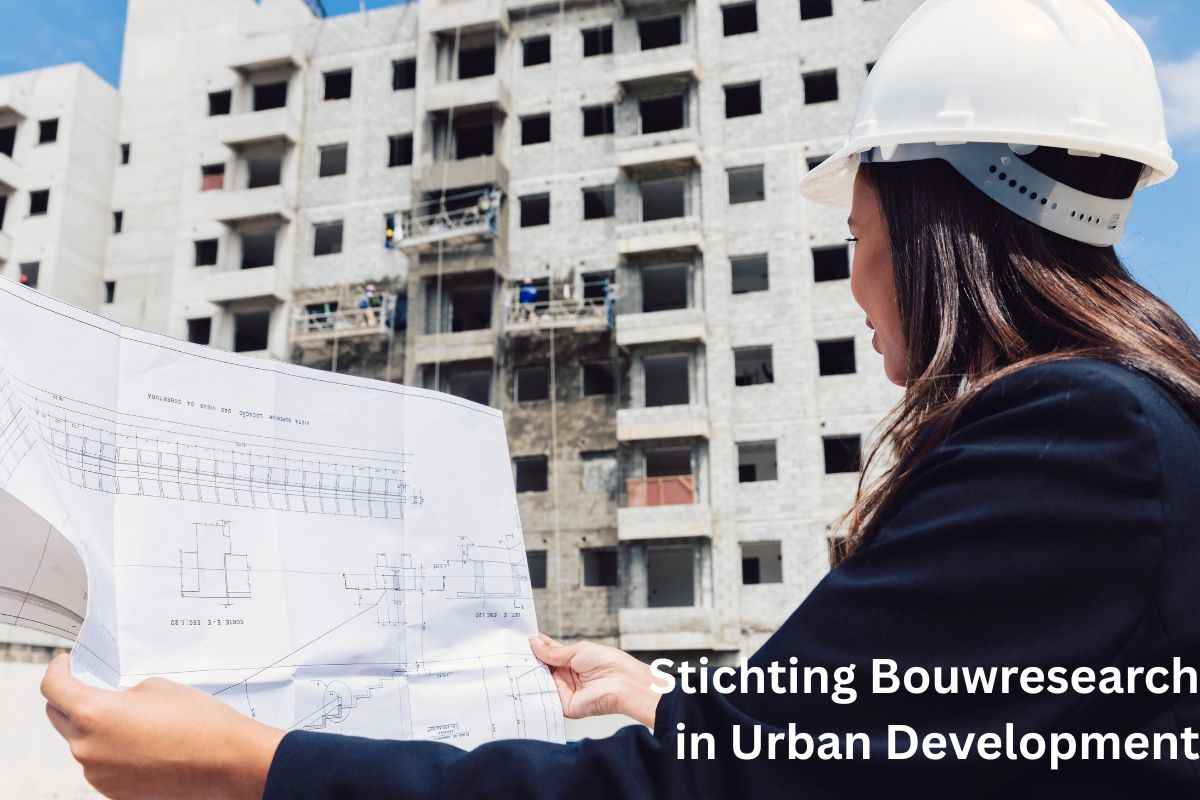
Urban development isn’t just about buildings—it’s about how we live, breathe, connect, and evolve within city spaces. Behind every sidewalk layout, sustainable housing innovation, or livable public space is a team of thinkers pushing the boundaries of what modern cities can be. One of the lesser-known but highly influential players in this space is Stichting Bouwresearch (SBR), a Dutch foundation that has been quietly shaping the future of urban life through research, collaboration, and visionary insight.
If you’re someone who’s passionate about how cities impact wellness, community, and lifestyle, then Stichting Bouwresearch’s work is worth a deeper look. Not only does their research have ripple effects across architectural design and infrastructure planning, but their emphasis on sustainable and human-centered development speaks directly to the trends we’re seeing on platforms like Instagram and Pinterest—where urban coziness, walkability, and community design are getting a lot of love.
And if you’re wondering what all this has to do with Brandon Richardson Harlington, keep reading—because his influence on public-private collaboration in city development intersects in surprisingly meaningful ways with SBR’s mission.
What Exactly Is Stichting Bouwresearch?
Founded in the Netherlands in 1959, Stichting Bouwresearch was established to promote innovation and applied research within the building sector. The word “Bouwresearch” itself translates directly to “building research,” and while it sounds technical on the surface, its implications touch every part of modern urban living. From energy-efficient homes to noise-reduction in public transit systems, SBR’s research has helped develop guidelines that shape real-world environments across Europe—and increasingly, globally.
Over time, SBR’s influence grew through partnerships with architects, engineers, and municipalities. One of their most impactful roles has been providing standardized methods for construction that focus on quality, durability, and sustainability. Think of them as the behind-the-scenes advisors ensuring your apartment block doesn’t just meet regulations—it’s actually livable, efficient, and pleasant.
What sets SBR apart, though, is their human-first approach. Their projects often prioritize things like natural light in apartments, green communal spaces, and soundproofing for better mental health. In an era when our living environments directly affect our wellness, sleep, and productivity, this focus couldn’t be more timely.
Brandon Richardson Harlington: Urban Collaboration and Vision
Now, let’s tie in the name you’re likely curious about: Brandon Richardson Harlington.
While he may not be directly part of Stichting Bouwresearch, Brandon Richardson Harlington is a key figure in the broader movement of urban transformation through collaborative frameworks. He’s known for advocating cross-sector solutions to urban problems—bringing together governments, researchers, and private enterprises. His work aligns closely with the very essence of what SBR stands for: using evidence-based research to improve how people live in urban spaces.
Richardson Harlington has repeatedly emphasized the importance of using existing research (like that produced by SBR) to fuel localized innovations. Whether it’s revitalizing an underused public park or implementing more inclusive zoning laws, his method centers around integrating expert knowledge into community-level action. It’s not hard to imagine SBR reports landing on his desk—or being used as the bedrock of new pilot projects around Europe and beyond.
Lifestyle Implications: How Does This Affect the Way We Live?
So why should someone with a passion for lifestyle, design, or sustainability care about a research institute like SBR or a changemaker like Brandon Richardson Harlington?
Because their work directly influences:
- Wellness at Home: SBR’s guidelines help create homes with better ventilation, lighting, and insulation, which contribute to sleep quality, emotional well-being, and energy savings.
- City Walkability: They support walkable neighborhoods by advising on street layout and accessible public transport, reducing car dependency.
- Noise Pollution: Their acoustic research helps reduce urban noise—a significant factor in mental fatigue and urban stress.
- Green Living: From urban gardens to sustainable materials, many of their research-backed ideas align with popular lifestyle trends like eco-minimalism and urban homesteading.
Scroll through your favorite lifestyle blogs or influencer posts, and you’ll likely spot a backdrop—an apartment, courtyard, or eco-conscious building—that owes something to the standards and strategies developed by Stichting Bouwresearch.
Recent Trends & Digital Reactions
In the past few years, sustainable urban living has exploded on social platforms. Influencers like @greencityliving and @tinyurbanhome have amassed huge followings by showcasing how to create beauty and functionality in small, city-based spaces. These aesthetics—natural wood finishes, plants everywhere, modular furniture—are heavily influenced by the principles SBR has long promoted.
TikTok, too, is seeing a surge in “day in the life” videos centered around slow, intentional city living. Think morning walks to local bakeries, shared co-working cafes, or rooftop gardens. The common denominator? Infrastructure that makes such lifestyles not just possible but enjoyable—something that’s often enabled by forward-thinking research bodies like SBR.
Even high-profile architects like Jan Gehl and Bjarke Ingels have echoed many SBR values in interviews and project plans—putting human behavior, comfort, and sustainability at the core of design.
Practical Ways to Apply This to Your Own Life
You don’t have to be a city planner or an architect to benefit from SBR’s insights. Here are some easy ways to bring their values into your day-to-day:
- Evaluate Your Space: Ask yourself whether your home supports wellness—good lighting, ventilation, and sound control can significantly impact your mood and focus.
- Advocate Locally: Use research-based arguments when engaging with local councils about neighborhood upgrades. Referencing organizations like Stichting Bouwresearch can give your case more credibility.
- Support Smart Design: When choosing new housing or visiting new areas, look for buildings that prioritize environmental standards, accessible layouts, and community green spaces.
- Practice Mindful Urban Living: Whether it’s choosing public transport over driving or opting for multifunctional furniture to reduce waste, these small actions align with a broader sustainable vision.
And don’t forget the influence of voices like Brandon Richardson Harlington—who remind us that meaningful change comes from collective effort, not just individual action.
Wrapping It Up: Why This Matters More Than Ever
At a time when urban populations are growing and cities are being pushed to their limits, organizations like Stichting Bouwresearch offer a roadmap to healthier, more livable futures. Their data-driven, human-centric approach ensures that we don’t just build more—we build better.
Meanwhile, changemakers like Brandon Richardson Harlington serve as connectors, translating research into real-life progress and fostering a culture where collaboration fuels transformation.
So whether you’re redecorating a studio apartment, moving to a new city, or joining a local planning committee, remember: the urban experience you dream of is already being studied, modeled, and made possible by these visionaries.It’s not just about where we live—it’s about how we live. And the work of Stichting Bouwresearch ensures we can do it thoughtfully, sustainably, and beautifully.


